Adapting to sea-level rise in the Vietnam Delta means also fighting inequalities and marginalization
As sea levels rise, communities across Vietnam face growing threats to their homes and livelihoods. In Can Gio, a coastal district of Ho Chi Minh City, residents are adapting in ways that reflect both resilience and complexity while fighting inequalities and marginalization.
Fishing brings less burdens but risks remain
Can Gio’s low elevation, just 1.5 meters above sea level, makes it one of Vietnam’s most vulnerable coastal zones. Projections suggest that by 2100, up to 20% of Ho Chi Minh City could be submerged if sea levels rise by one meter.
For many fishers, the rising seas maybe have brought the ocean closer to shore, reducing the need for long trips.
“The rising sea moves us closer to our livelihood,” shared one male participant shared at the ReTrEaT for Cities workshop held in Ho Chi Minh City on June 12–13, 2025.
Despite government resettlement programs offering factory and urban jobs, many villagers cannot give up their fishing livelihoods viewing them not just as work but as identity. Yet this convenience brings challenges: coastal erosion, unpredictable weather, and declining fish stocks raise concerns about long-term sustainability.
Women navigate new opportunities and barriers
Some communities report increased income from harvesting snails now thriving in mangrove areas.
50-year-old Phan Thanh Dung, a local farmer who cultivates oysters and other seafood as part of his coastal livelihood noted:
Sea level rise brings more snails to mangrove trees, increasing our income.
However, benefits are uneven. A woman with a walking disability said: “Snails have moved further inland, making harvesting more difficult.”
This highlights how climate impacts can deepen existing inequalities, especially when adaptation strategies overlook the needs of marginalized groups.
This contrast shows how climate impacts can deepen existing inequalities especially when adaptation strategies overlook marginalized groups.
Wealth distribution, physical mobility, and resource access all determine who benefits and who suffers. If adaptation measures fail to consider diverse needs — including those of people with disabilities — climate-driven advantages may reinforce inequalities rather than alleviate them.
This calls for governments and policymakers to rethink climate adaptation: is innovation truly inclusive? Are economic shifts unintentionally sidelining vulnerable groups? While some find new paths to prosperity, others risk being left behind.
Climate change does not discriminate but societal structures do.
“How will people with disabilities be included in local planning for sea level rise? How can state agencies empower them to be seen as contributors and not as a burden?” asked 43-year-old Vo Van Phang, a district officer at Can Gio’s Department of Agriculture and Environment.
Farming declines as land disappears
Rising seas have affected farming.
63-year-old Doan Van Thanh, former vice president of the local farmers’ association said:
We planted fruit trees, but sea level rise cost us three to four hectares of fruit plantation.
As farmland erodes, families are shifting to fishing or reinforcing their homes with soil—short-term solutions against long-term change. Coastal erosion has already pushed many families away from farming toward the sea for survival. Villagers are innovating where they can.
“To secure ourselves from the rising sea, we add more soil to the ground when building houses,” shared Thanh Dung. But how sustainable is this approach against the rising sea levels?
A community on the frontline
Residents are not waiting for outside solutions. Their efforts—reviving traditions or modifying homes—reflect their determination to adapt. But critical questions remain: Are these strategies sustainable? And who is being left behind?
Nurturing the next generation of mangrove stewards
In Can Gio, environmental education begins early. Local officials engage youth in mangrove conservation to ensure intergenerational stewardship.
“We organize regular activities for mangrove conservation with young people,” said Vo Van Phang. “We bring them into the mangrove forest and encourage them to express their thoughts through art. This teaches environmental protection and conservation.”
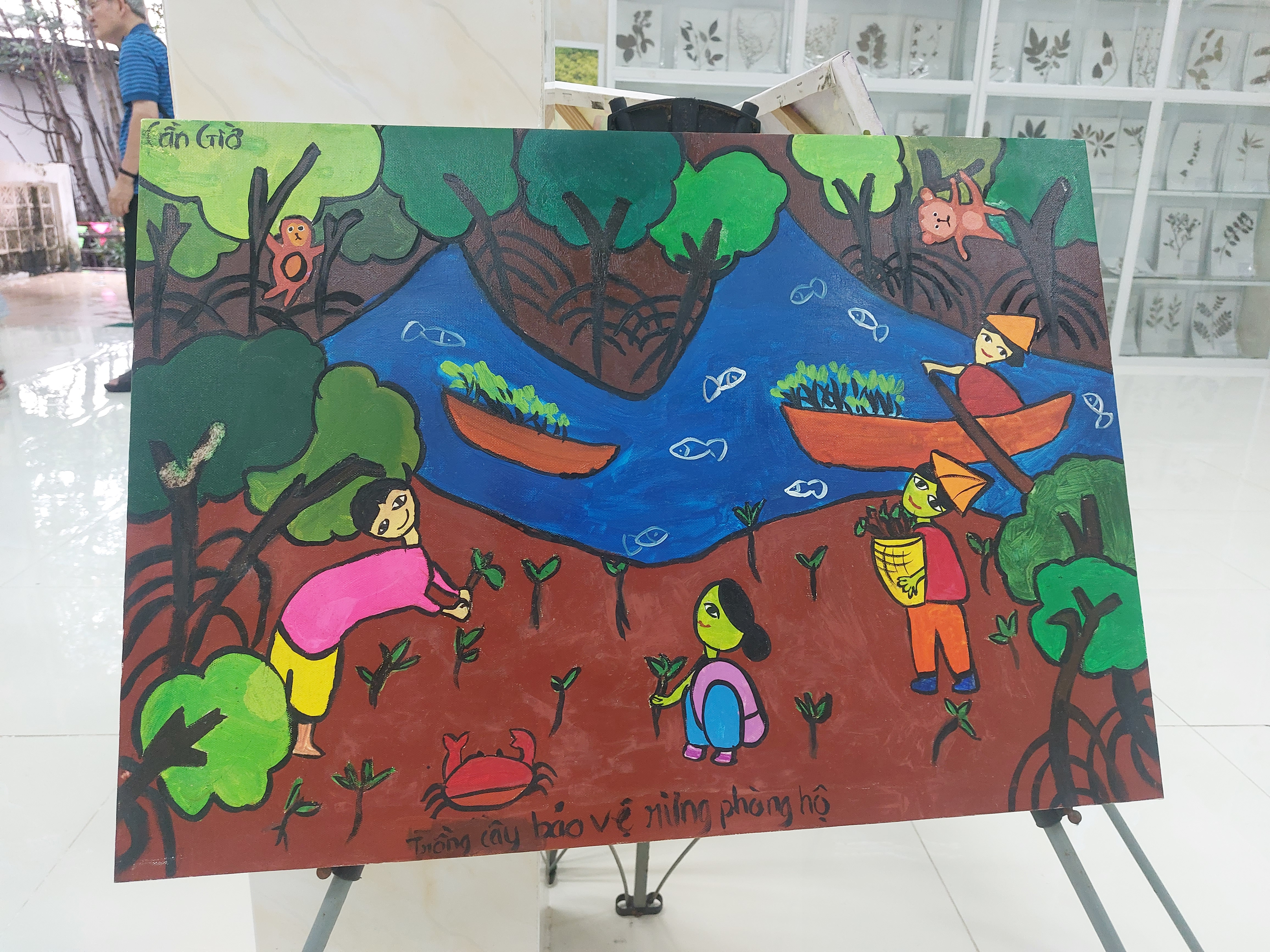
Children planting mangroves—a symbol of hope, resilience, and the community’s commitment to environmental stewardship. Artwork by a youth artist in Can Gio, Vietnam. Photo: Renz Prudenciado.
These creative sessions build awareness and emotional connections to the mangrove ecosystem, fostering long-term commitment to sustainability and resilience.
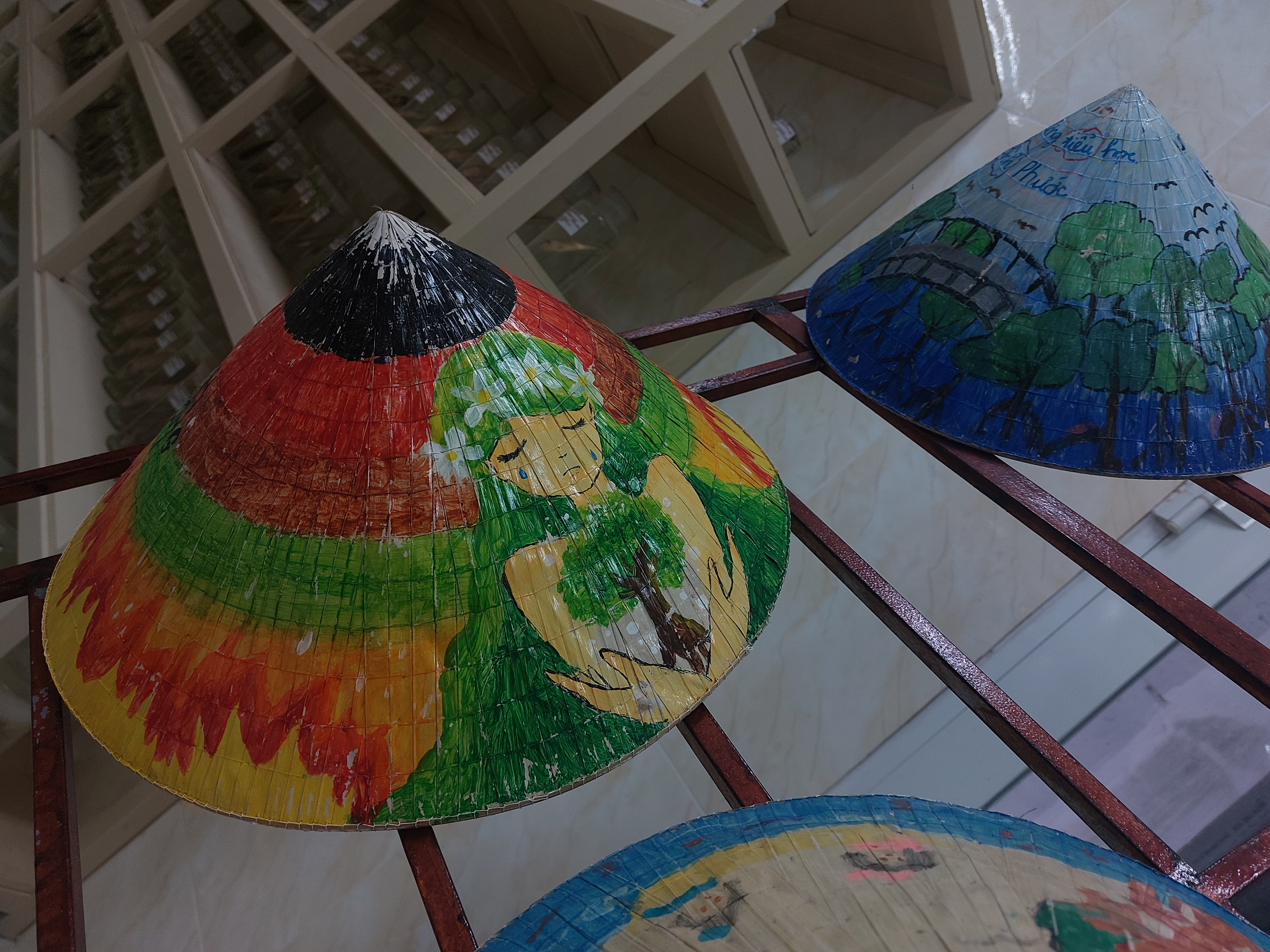
Painted on a traditional nón lá hat by a young artist in Can Gio, Vietnam, this artwork portrays Mother Nature in tears—capturing the grief of environmental loss and the urgent need for climate action. Photo: Renz Prudenciado.
As the tides rise, Can Gio offers a glimpse into the future of climate resilience—where survival deepens innovation, inclusion, and artistic creation.
Info
This story is part of the following project
Mekong Thought Leadership and Think Tanks Network
Topic
Country
Related people
You might be interested in
-
Grants open for research linking to policy action under Mekong Thought Leadership and Think Tanks Network Program
Mekong Thought Leadership and Think Tanks (MTT) Network Program calls for applications to its research-to-policy grants supporting evidence-based research that connects to practical solutions to challenges in the water-energy-climate nexus.
![Grants open for research linking to policy action under Mekong Thought Leadership and Think Tanks Network Program]()
-
Now open: fellowship opportunities under Mekong Thought Leadership and Think Tanks Program
MTT Program is opening a call for fellowships to be hosted in Cambodia, Lao PDR, Thailand, and Vietnam. The Program will award up to 13 high-quality entry- or mid-level professionals of all genders who are Mekong citizens.
![Now open: fellowship opportunities under Mekong Thought Leadership and Think Tanks Program]()
-
Call for 3rd batch applications: fellowship opportunities under Mekong Thought Leadership and Think Tanks Program
MTT Program is opening a call for fellowships to be hosted in Cambodia, Lao PDR, Thailand, and Vietnam. The Program will award up to 13 high-quality entry- or mid-level professionals of all genders who are Mekong citizens.
![Call for 3rd batch applications: fellowship opportunities under Mekong Thought Leadership and Think Tanks Program]()

 By
By
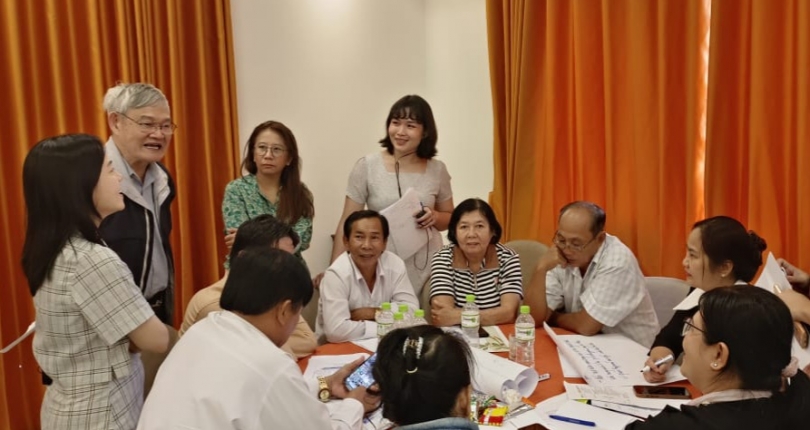

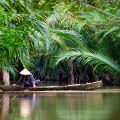
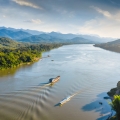
 Read more about SUMERNET
Read more about SUMERNET
